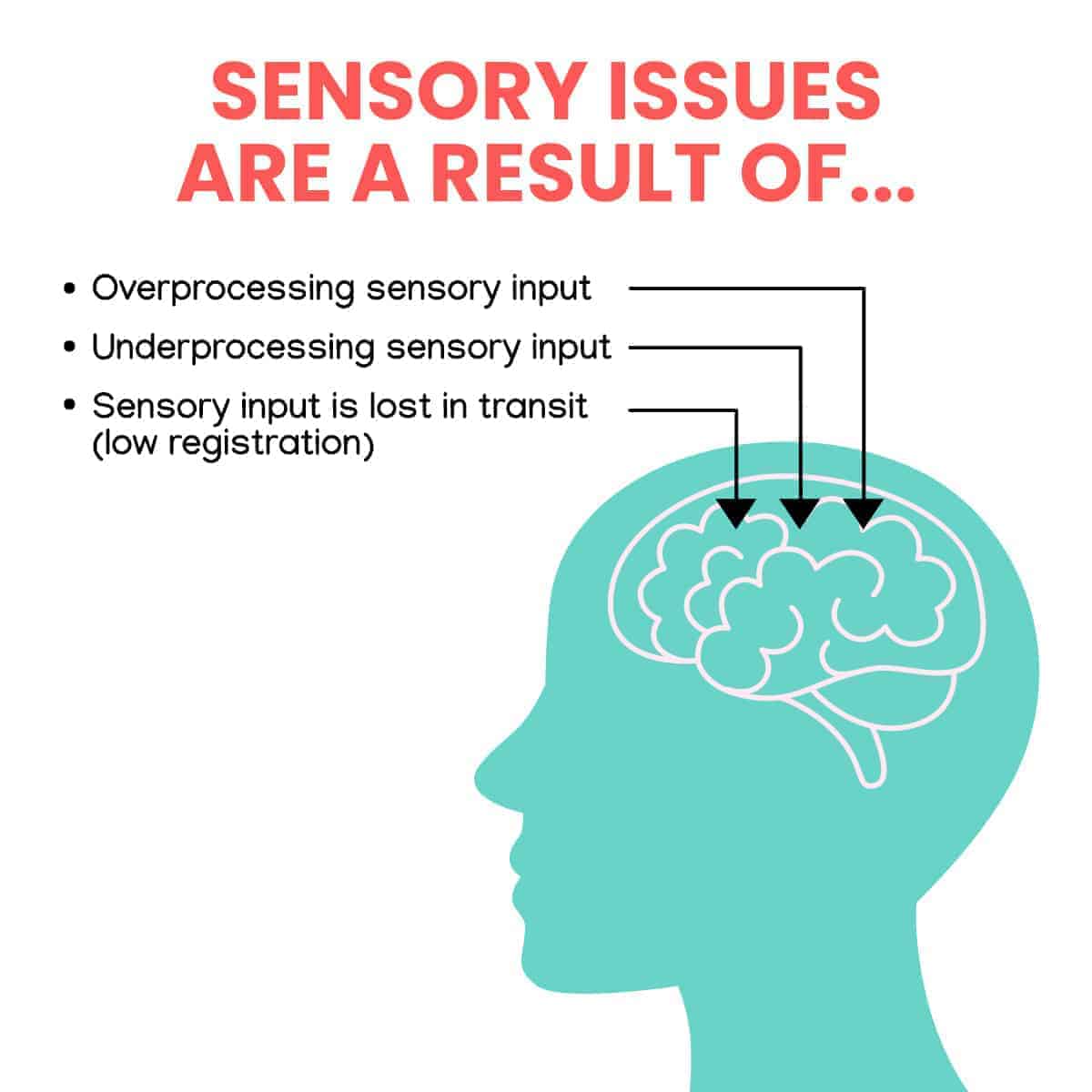Embracing the World of Sensory Processing and ADHD: A Nurturing Guide for Parents
Hello, awesome parents! Are you on a quest to understand more about sensory processing and ADHD in your wonderful little humans? You’ve come to the perfect spot! In this comprehensive guide, we will take a joyous journey through the whirlwind of sensory needs and attention dynamics that your child may experience. Let’s dive into a sea of strategies, tips, and above all, understanding, because each child’s journey is as unique as they are!
What is Sensory Processing?
Sensory processing is the complex way in which our bodies take in and respond to the multitude of sensory information from the environment. Imagine it as a magical symphony where our senses are the instruments, and our brain is the conductor. For some kiddos, this symphony plays harmoniously, but for others, some instruments might be a tad too loud or unusually soft. When this balance is off, children may react differently, seeking more sensory input or feeling overwhelmed by it.
Understanding ADHD in the Sensory World
Now add in the sparkly firecracker that is Attention Deficit Hyperactivity Disorder (ADHD). It’s not all about bouncing off the walls; it’s a neurodevelopmental disorder affecting focus, impulse control, and activity levels. When you mix sensory processing differences and ADHD, it can feel like setting off a confetti cannon in a calm library. It’s bright, it’s chaotic, and it’s incredibly important to understand in order to best support your child.
Sensory Seeking vs. Sensory Avoiding
Children’s reactions to sensory input typically fall into two joyous baskets: sensory seeking and sensory avoiding. The sensory seekers are like little explorers, looking for mountains to climb and fountains to splash in, craving intense sensations. Sensory avoiders, on the other hand, might find these same sensations akin to wearing a sweater knitted from itchiness and discomfort.
Meet the Senses
- Vision (Sight): Bright or flickering lights might be overstimulating, while contrasting colors can be captivating.
- Auditory (Hearing): Some kids might seek the joyous echo of loud sounds, while others prefer the serene whisper of silence.
- Olfactory (Smell): That fresh batch of cookies might be heaven for a sensory seeker or a cloud of overwhelm for a sensory avoider.
- Gustatory (Taste): Spicy flavors can light the fire of excitement or be a taste too far for some.
- Tactile (Touch): Cozy blankets might seem like a warm hug or a squeeze that’s a bit too tight.
- Proprioceptive (Body Awareness): The weight of pressure or the freedom of movement might be grounding or disorienting.
- Vestibular (Balance): Spinning and jumping might be thrilling or could set the world spinning in an unsettling way.
Creating Sensory-Smart Environments
The environments we craft for our children are like their personal theme parks, so let’s make them sensory-friendly havens! Adjusting lighting, reducing noise, and incorporating cozy corners for cuddles are just some ways to create a nurturing atmosphere where your child can thrive.
Stay tuned for more smiles and a plethora of strategies as we continue this journey, helping you to be the most supportive and loving guide for your sensory explorer or your little peace-seeker!

5 Essential Things Parents Should Know When Preparing for Sensory Processing and ADHD Challenges
1. Knowledge is Empowering
Understanding the nuances of sensory processing and ADHD can feel overwhelming, but gaining knowledge is your superpower. Learn about the different senses and how they impact your child’s behavior. Each sense plays a crucial role, from tactile input affecting comfort to vestibular input influencing balance. Being informed not only helps you advocate for your child but also assists you in making sense of their needs.
2. Patience is Your Best Friend
Patience truly is a golden trait when it comes to handling sensory and ADHD challenges. Remember that your child is not acting out or being difficult on purpose, and their brain is simply responding to the world differently. Being patient with yourself is equally important as you navigate this colorful path. Self-care is essential; it’s like putting on your own oxygen mask first to help others.
3. Consistency Creates Comfort
While spontaneity can be fun, children with sensory processing differences or ADHD often benefit from structured routines and predictable environments. Knowing what to expect can decrease anxiety and help them manage their sensory needs and focus better. Consistency doesn’t mean rigidity, though—there’s always room for flexibility within a framework that feels safe and secure.
4. Sensory Diets are Not Just About Food
The term “sensory diet” refers to a carefully crafted set of activities tailored to meet your child’s sensory input needs throughout the day. These can range from calming tasks, like squeezing play dough, to alerting activities, like jumping on a trampoline. A well-balanced sensory diet can help regulate your child’s emotional and physical state, resulting in a happier, more focused child.
5. Advocacy Advances Opportunities
Become your child’s cheerleader and advocate, both at home and in their school environment. Understand your child’s legal rights to appropriate accommodations and work alongside teachers, occupational therapists, and other professionals to ensure they receive the help they need. Advocate not just for your own child, but join communities that push for greater awareness and resources for all children dealing with sensory processing and ADHD.
Identifying Signs and Seeking Diagnosis
Spotting the early signs of sensory processing issues or ADHD is instrumental in getting timely support. Look out for difficulties with concentration, organization, and completing tasks, or watch for signs of sensory discomfort like irritation from clothing, disinterest in messy play, or overwhelming distress in crowded, noisy places. An evaluation by a pediatrician, psychologist, or occupational therapist can confirm a diagnosis and set you on the right path to support.
Coping Strategies and Tools
Life with sensory processing challenges and ADHD is a kaleidoscope of experiences, but with the right tools, it becomes easier! Introduce coping strategies such as deep breathing exercises for calmness, fidget toys for focus, and noise-canceling headphones for peace in loud environments. Embrace tools that enhance structure, such as visual schedules that provide a clear outline of the day’s activities, and timers to transition smoothly between tasks.
Activities for Sensory Integration
Engaging in sensory integration activities can be a blast for both you and your child, fostering connections while helping them balance their sensory needs. These could involve obstacle courses to challenge their proprioceptive sense, arts and crafts for tactile fun, or even cooking together to tease those gustatory senses. Occupational therapists can provide specialized sensory integration therapy if needed, helping children make sense of and respond to their environment more effectively.
By embracing these tips and strategies, you will not only better understand sensory processing and ADHD, but also discover how to create a supportive, joy-filled environment for your sunshine. You’ve got this!
See more great Things to Do with Kids in New Zealand here. For more information see here
Disclaimer
The articles available via our website provide general information only and we strongly urge readers to exercise caution and conduct their own thorough research and fact-checking. The information presented should not be taken as absolute truth, and, to the maximum extent permitted by law, we will not be held liable for any inaccuracies or errors in the content. It is essential for individuals to independently verify and validate the information before making any decisions or taking any actions based on the articles.




